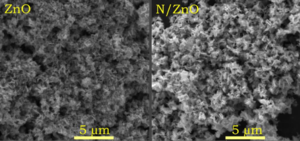
Textile industries have an immense existence in a country’s economy. Large quantity of water is consumed by textile dyeing industries and produces volumes of wastewater. Treating these hazardous effluents to make them environmental-friendly, using nano-catalysts is the best promising method. Metal oxide nanomaterials have emerged as an important tool for environmental remediation. Herein the hydrothermally synthesized eco-friendly and low-cost zinc oxide/copper oxide nanocomposites (ZnO/CuO NCs) with different proportions of binary oxides are evaluated for the applications of degrading organic pollutants and antibacterial activity. The influence of doping was also studied in structural, optical, morphological, photocatalytic and antibacterial activities. Presence of CuO in NCs affirms the formation of ZnO/CuO NCs. Photodegradation of Congo Red (CR) and real textile dyeing wastewater (TDW) under visible light irradiation by 0.5M ZnO:0.5M CuO NCs revealed them to act as a perfect catalyst by tuning doping-concentration of Cu in ZnO, with 1.9x10-3/min and 5.4x10-3/min rate constant. Hybrid nanocomposite materials exhibit high antibacterial activity against S. aureus and E. coli with 5mm and 6mm inhibition zone. The experimental characteristics of NCs are explained by combination of electronic band structure due to size effect and tuning metal oxide proportions in comparison to that of pure metal oxide.
Keywords[edit | edit source]
Nanostructures; Oxides; Chemical synthesis; Electron microscopy; bactericide; ZnO; zinc oxide; ZnO; CuO; antibacterial activity; nanomaterials; nanoparticles;
See also[edit | edit source]
- Antibacterial and anticancer activity of hydrothermally-synthesized zinc oxide nanomaterials using natural extracts of neem, pepper and turmeric as solvent media
- Inhibition of growth of S. epidermidis by hydrothermally synthesized ZnO nanoplates
- Structural and optical characterization and efficacy of hydrothermal synthesized Cu and Ag doped zinc oxide nanoplate bactericides




